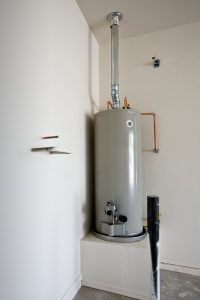 Water heaters are a staple of most modern homes: providing heated water safely and effectively as easily as turning on a tap. They’re located in quiet corners of the house, such as the basement where no one visits especially often, and they usually do their jobs silently and without fuss.
Water heaters are a staple of most modern homes: providing heated water safely and effectively as easily as turning on a tap. They’re located in quiet corners of the house, such as the basement where no one visits especially often, and they usually do their jobs silently and without fuss.
But there’s a downside to such quiet service. When problems arise, they rarely attract notice and can spread until they are extensive indeed. In more than a few cases, what could be a simple repair job becomes an unplanned replacement: driving up the costs and adding time as well as expense to the operation.


 Most homes in the area use traditional tank water heaters, which use a large cylindrical tank to heat the water before sending it into the pipes of your home. They work extremely well, which is why they’re so popular, but they’re not the only type of water heaters out there. Tankless water heaters do the job just as effectively and bring some benefits to your home to boot. How do they work, and what do you stand to gain by having one installed? Read on for the answers.
Most homes in the area use traditional tank water heaters, which use a large cylindrical tank to heat the water before sending it into the pipes of your home. They work extremely well, which is why they’re so popular, but they’re not the only type of water heaters out there. Tankless water heaters do the job just as effectively and bring some benefits to your home to boot. How do they work, and what do you stand to gain by having one installed? Read on for the answers.  Water heaters are one of the unsung heroes of our households: quietly and reliably providing hot water for cooking, cleaning and bathing. But because they’re so reliable – as well as being tucked away in seldom-used parts of the house like the basement – it can often be hard to notice the signs of trouble. That, more than any other factor, contributes to high repair bills: the homeowner’s unawareness of the issue until it’s too late.
Water heaters are one of the unsung heroes of our households: quietly and reliably providing hot water for cooking, cleaning and bathing. But because they’re so reliable – as well as being tucked away in seldom-used parts of the house like the basement – it can often be hard to notice the signs of trouble. That, more than any other factor, contributes to high repair bills: the homeowner’s unawareness of the issue until it’s too late. 






